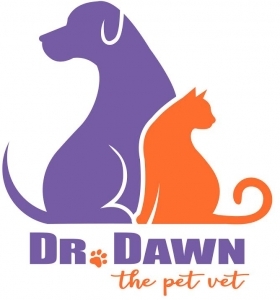 In continuation with the talk about what can be done to minimize the stress of a veterinary visit, there are things that many practices are implementing to make it visit “fear free”. Knowing this advance, you might play a role in reducing the fear before you even walk in the door.
In continuation with the talk about what can be done to minimize the stress of a veterinary visit, there are things that many practices are implementing to make it visit “fear free”. Knowing this advance, you might play a role in reducing the fear before you even walk in the door.
Cats
1. In preparing for the visit, the vast majority of cats will need to be transported in a carrier. Those that are leach and harness trained may not need a carrier, but still might benefit, if it affords them an area of safety and quiet. The carrier itself should have good ventilation, and enough space for a thick towel and for the cat to stand up. An easy open top is best. There are many variations available in stores. When selecting one, make sure that it allows you to take it apart in a dimly lit examination room with minimum noise and fuss, if need be.
Cats must be taught how to use carriers and that they are good things. This requires an investment of time on your part, involving standard reward and desensitization and counterconditioning training. That basically means, you want to teach them to like the carrier, with treats, or pleasant experiences associated with it. The best time to teach crate comfort is in kitten hood. If started later in life, try feeding the cat in the carrier, etc.
2. Cats only waiting areas are ideal. Some practices have quiet, cats-only entrances.
3. Wait time should be minimized. Check for signs of nauseas, salivation or other signs of motion sickness in the car. If this has been a problem, discuss with your veterinarian before the visit, so that they may decide on a mild sedative or antiemetic appropriate for use prior to the visit.
4. Weighing the patient is part of every exam, or should be. Try to minimize the handling and time spent doing this. Maybe knowing the weight of the carrier, with towel, beforehand, will help.
5. The exam. Cats-only exam rooms are generally helpful. Some cats react adversely to non feline odors, so mention it if you have determined that beforehand. Some ideas, more for the veterinarian, but worth noting on your part, is if the doctor speaks slowly, maybe has low-grade white noise or classical music in the background, which is soothing, and the use of dimmed or targeted lighting. To minimize odor-related stress, hopefully the room is aired out, or does not have a strong odor of other animals or strong disinfectants. Sometimes synthetic pheromonal products are used in the room, although the debate is out as to whether they work.
Rewarding the patient with treats is nice, if the cat will allow it. Sometimes they prefer a new toy to go home with. We do offer treats, and it is nice if the doctor or nurse makes the effort, even if the patient refuses it.
1. Carriers come in an enormous range of sizes, based on the size of the patient. Small dogs are more likely to come in a carrier.
2. The vast majority of dogs will, or should, be kept on a leach or harness. It should fit properly, to avoid them backing out of a loose collar, which happens all too often. Sometimes you need to encourage the dog to come inside the building using treats, toys and verbal rewards. Try to minimize force if these techniques do not work, and ring a quiet cornier of the waiting or exam room to rest in. Getting a stressed dog into an empty exam room asap is best. Some animals are happier waiting in the car until the doctor is ready. Preplan if this is the case, and take weather into account.
3. The exam. Some dogs do better on the floor, and yet some feel more threatened if they are hovered over by the doctor, and thus do better if lifted onto the table. Many prefer a rubberized or soft surface on the table for standing and being handled. Most doctors start their exam at the head and work their way back. If you know that your dog is more stressed when the head is handled, this might be left until the end of the exam. Mention it to the doctor, nurse, etc. Slow, steady pressure on the dog, with one hand always remaining on him may be helpful. Some patients become more anxious when they are in the room with their owners and being examined. They have protectiveness over you, an actually do better being examined in the back, away from you. If your doctor suggests this, consider it. I have many patients that do better away from the client.
 As with cat exams, dog only rooms and those with reduced odors, dim lighting, or directed lighting, soothing sounds or classical music all can be helpful in reducing stress.
As with cat exams, dog only rooms and those with reduced odors, dim lighting, or directed lighting, soothing sounds or classical music all can be helpful in reducing stress.
 4. Some patients do better being examined on your lap. Others, though, for the reason listed above, actually do worse. Small dogs may benefit rom towel wraps, as cats do. Some do better wearing eyeshades, head covers such as Calming Caps or wraps such as Thundershirts. You would need to know this ahead of time and purchase them, in addition to getting your dog acclimated to it. If indicted, they can help other stressful situations that your dog may encounter in their environment. If you have one already, by all means, bring it to the exam.
4. Some patients do better being examined on your lap. Others, though, for the reason listed above, actually do worse. Small dogs may benefit rom towel wraps, as cats do. Some do better wearing eyeshades, head covers such as Calming Caps or wraps such as Thundershirts. You would need to know this ahead of time and purchase them, in addition to getting your dog acclimated to it. If indicted, they can help other stressful situations that your dog may encounter in their environment. If you have one already, by all means, bring it to the exam.
Hopefully this has been helpful, and given you some ideas as to what to look for in your pet, and at your vet office. Many times, these efforts are already in place, and still the experience could be better. If so, talk to them about anti-anxiety medications, both over the counter or prescription.
Dr. Dawn
Please share and subscribe here





